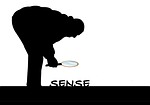Standards-based education reform of public schools has been tried before.
Around 1913, the industrial “efficiency movement” focused public attention on outcomes but when educators attempted to “routinize teaching,” or standardize it, it didn’t work according to Robert J. Marzano and Jon S. Kendall in “The Fall and Rise of Standards-Based Education.”
And by the late 1930’s research completed by the Cooperative Study of Secondary Schools Standards concluded, among other things, that standardized test scores as the sole means of evaluating schools tended to make “instruction point definitely to success in examinations,” cultivated “a uniformity that was deadening to instruction,” “thwarted the initiative of instructors,” and can “destroy the flexibility and individuality of an institution.” In addition to bringing about a rigid curriculum, the study concluded, this type of testing had little validity for identifying superior and inferior schools and a better method was available. In 1939!
But the plans were set aside while the country addressed the needs of World War II. We moved on, it would seem, unaware of what had come before. And in the process, we changed from looking to improve education by providing the necessary “inputs” to a heavier focus on “outputs.” (Recall the Coleman Report) So that is how we ended up repeating our standards experiment with an even greater emphasis on test scores.
By 2001, the country had become convinced that we needed a federal accountability system and the “No Child Left Behind” (NCLB) Act was it! The law focused all of our attention (and dollars) on accountability for all schools totally based on student outcomes as judged by standardized test scores.
We replaced individual “performance” standards with state “curriculum” standards. Now we risk setting national curriculum standards instead of recognizing that children need us to identify their individual strengths and weaknesses and work with them to attain a level of mastery of the classroom curriculum. This isn’t a proposal that gets away from being held accountable to a standard; it’s one that is responsible for meeting the needs of the individual student along with educational standards. This is a philosophy that can take us from a classroom culture of test preparation to a culture of educating each child to the fullest extent of his or her talents — meeting the standards for American excellence and equality.
We made tremendous progress in the sixties and seventies because we followed an educational philosophy focused on providing the necessary “inputs” to the hardest to teach students. Desegregation of schools peaked in the 1980’s and a narrowing of the achievement gap occurred during the 1970’s and 1980’s. Now, the focus is the gap, is the test, is the score, and, the gap persists.
In the march towards equal opportunity in education, we got stuck in the ditch of standardization of children because we set test scores as our goal — in law and in the minds of Americans. The Modern Standards Movement politically overpowered, but did not destroy, the Modern Community Education Movement.
If we can only come to understand standards and their proper use, we have a shot at getting it right— in the minds of Americans and in law.
The big question is; does Congress know enough to get it right this time?
#####
The March Begins. was the first in this series On The Road to Educational Quality and Equality. Next Up: What Do YOU Mean “Standards”?


